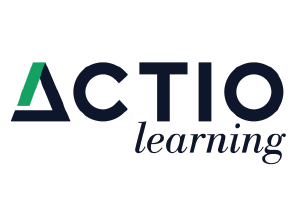Editor’s note: As we ended a difficult and unique year and entered a new one, the Training Industry editorial team asked learning leaders to write in with their reflections on 2020 and predictions for 2021. This series, “What’s Changed and What Hasn’t?: Taking Stock of 2020 and Planning for 2021,” is the result. Plus, don’t miss our infographic, “5 Tips for Turning 2020 Disarray Into 2021 Direction: Insights From Learning Leaders,” which shares insights from the series.
With the COVID-19 pandemic accelerating and shifting the perception of working from home, eight out of 10 business leaders plan to allow employers to work remotely, at least some of the time, after the pandemic. Last year, leaders learned that the future of work will not be defined by a physical office but by agile organizations that can strategically change internal and external processes to improve performance and reduce costs.
As mindsets and company dynamics continue to shift, anticipations, expectations and predictions around the future of work are taking shape. How will those changes shake up workforce culture and other growing demands? As companies enter 2021, what workplace transformations will the new year bring? Let’s take a look at what’s changed as a result of COVID-19 and what hasn’t.
What’s Changed?
Human Resources Takes the Lead and Sets The Tone
The human resources (HR) function took the lead in managing the pandemic from an organizational standpoint, as new rules governing workplace safety, compensation and leaves of absence came into play. HR professionals quickly needed to learn how to keep health information private while taking employees’ temperatures and sanitizing their workspaces after they tested positive for COVID. They learned how to pay employees properly when they took time off for health care reasons or because of school closures.
This crisis drove home the fact that HR is essential to staying in compliance with ever-changing rules. Hopefully, business leaders now understand how important it is to have skilled and knowledgeable professionals in the HR role.
The Workplace Adapts to a New Way of Learning and Training
2020 continues to be a challenging time for leaders looking to train incoming employees and upskill team veterans. Fortunately, the use of digital tools and learning platforms has increased substantially across all segments of the workforce, from frontline workers to managers and senior leaders.
Unfortunately, new employees often need to learn the ropes from a “live” person, and some workers struggle with technology. With mandates on meeting sizes and protocols changing as COVID cases continue to rise, businesses can’t afford to halt critical workplace training, even as they simultaneously work to put employee safety first. Thus, adaptation is undoubtedly a trend employers and leaders will continue to navigate as the future of work continues to unfold.
The New Year Brings New Roles
I predict that two new roles will emerge in the workplace because of what we’ve experienced during the pandemic. Employee engagement managers could ensure that at-home and on-site workers have everything they need to perform, and change managers could predict, plan and navigate change, whether it is intentional or unexpected but required because of things like worldwide pandemics.
In addition, because vast amounts of Baby Boomers are retiring, and Generation Z is entering the workforce, organizations must create more defined mentorship programs so knowledge can be intentionally transferred from one group to the other.
Older Workers Opt out
Because working from home often requires employees to be technologically adept, some older workers are opting out of the workforce. In addition to providing necessary resources, a key to retaining them is to be empathetic. Giving them grace and showing them compassion can inspire employees to stay on board when the going gets tough.
What Hasn’t Changed?
Emotional Intelligence Is Critical
The term “emotional intelligence” (EQ) typically means being able to understand what you’re feeling and why, manage your emotions, and empathize with others. Not surprisingly, leaders who develop their EQ typically achieve better results from their employees. Because many teams are displaced, human interaction is limited and people are generally stressed, the pandemic kicked the need for EQ development into overdrive. Emotional intelligence should be the focus of leadership training in 2021.
On-site Training Will Continue
Although online training has its advantages, the countless hours spent in front of a computer and in Zoom meetings has demonstrated to many employers and employees that in-person training is preferable. Online training is often less expensive than having a trainer on site; however, it’s also often less effective. Therefore, the cost of in-person training is usually worth it. I predict many employers will return to that format because of the screen fatigue many employees have experienced over the past year.
The workplace as we know it, will never be the same — which is not necessarily a bad thing. We’re much more aware of the need to keep employees safe and connected, we’re more creative than we thought we were, and we learned that it is people and organizations who can adapt can survive. We’ll take these lessons into 2021, and we’ll be better because of them.






